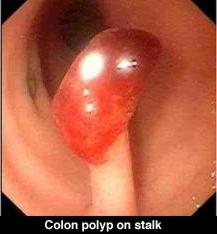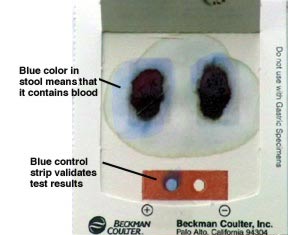From Wikipedia, the free encyclopedia
Secretin
Identifiers
Symbol
SCT
Entrez
6343
HUGO
10607
OMIM
182099
RefSeq
NM_021920
UniProt
P09683
Other data
Locus
Chr. 11 p15.5
Secretin is a peptide hormone produced in the S cells of the duodenum in the crypts of Lieberkühn.[1] Its primary effect is to regulate the pH of the duodenal contents via the control of gastric acid secretion and buffering with bicarbonate. It was the first hormone to be identified (see Discovery). In humans, the secretin peptide is encoded by the SCT gene.[2][3]
Discovery
In 1902, William Bayliss and Ernest Starling were studying how the nervous system controls the process of digestion.[4] It was known that the pancreas secreted digestive juices in response to the passage of food into the duodenum. They discovered (by cutting all the nerves to the pancreas in their experimental animals) that this process was not, in fact, governed by the nervous system. They determined that a substance secreted by the intestinal lining stimulates the pancreas after being transported via the bloodstream. They named this intestinal secretion secretin. Secretin was the first such "chemical messenger" identified. This type of substance is now called a hormone, a term coined by Bayliss in 1905.
Structure
Secretin is a linear peptide hormone, which is composed of 27 amino acids and has a molecular weight of 3055. A helix is formed in the amino acids between positions 5 and 13. The amino acids sequences of secretin have some similarities to that of glucagon, vasoactive intestinal peptide (VIP), and gastric inhibitory peptide (GIP). Fourteen of 27 amino acids of secretin reside in the same positions as in glucagon, 7 the same as in VIP, and 10 the same as in GIP.[5]
Secretin also has an amidated carboxyl-terminal amino acid which is valine.[6] The sequence of amino acids in secretin is: His-Ser-Asp-Gly-Thr-Phe-Thr-Ser-Glu-Leu-Ser-Arg-Leu-Arg-Asp-Ser-Ala-Arg-Leu-Gln-Arg-Leu-Leu-Gln-Gly-Leu-Val(NH2).[6]
Physiology
- Production
Secretin is synthesized in cytoplasmic secretory granules of S-cells which are found mainly in mucosa of duodenum, and smaller numbers in jejunum of small intestine.[7] - Stimulus
Secretin is released into circulation and/or intestinal lumen in response to low duodenal pH that ranges between 4 and 4.5 depending on species.[8]
It is the active form of prosecretin.This acidity is due to chyme, which contains hydrochloric acid, entering from the stomach via the pyloric sphincter.Secretin targets the pancreas, which cause the organ to secrete a bicarbonate-rich fluid that flows into the intestine. Bicarbonate ion is a base which neutralizes the acid, thus establishing a pH favorable to the action of other digestive enzymes to the small intestine and preventing acid burns[9] Other factors are also involved in the release of secretin such as bile salts and fatty acids which result in additional bicarbonate being added to the small intestine.[10] Secretin release is inhibited by H2 receptor antagonists which reduce gastric acid secretion. As a result, the pH in the duodenum increases above 4.5, and secretin cannot be released.[11] - Function
Secretin stimulates the secretion of bile from the liver. It also increases watery bicarbonate solution from pancreatic duct epithelium. Pancreatic acinar cells have secretin receptors in their plasma membrane. As secretin binds to these receptors, it stimulates adenylate cyclase activity and converts ATP to cyclic AMP.[12] Cyclic AMP acts as second messenger in intracellular signal transduction and leads to increase in release of watery carbonate.It is known to promote the normal growth and maintenance of the pancreas.
Secretin increases water and bicarbonate secretion from duodenal Brunner's glands in order to buffer the incoming protons of the acidic chyme.[13] It also enhances the effects of cholecystokinin to induce the secretion of digestive enzymes and bile from pancreas and gallbladder, respectively.
It counteracts blood glucose concentration spikes by triggering increased insulin release from pancreas, following oral glucose intake.<[14]
It also reduces acid secretion from the stomach by inhibiting gastrin release from G cells.[citation needed] This helps neutralize the pH of the digestive products entering the duodenum from the stomach, as digestive enzymes from the pancreas (eg, pancreatic amylase and pancreatic lipase) function optimally at neutral pH.[citation needed]
In addition, secretin simulates pepsin secretion which can help break down proteins in food digestion. It also stimulates release of glucagon, pancreatic polypeptide and somatostatin.[8]
Secretin has been widely used in medical field especially in pancreatic functioning test. Secretin is either injected[15] or given through the tube that is inserted through nose, stomach then duodenum.[16] This test can provide information whether there are any abnormalities in pancreas which can be gastrinoma, pancreatitis or pancreatic cancer.
Extensive research has been conducted on the use of secretin to treat Autism. A "gut-brain" theory of autism proposes a link between the gastrointestinal disorders observed in many children with autism and their brain dysfunctions.[17]
References
- ^ Häcki WH (September 1980). "Secretin". Clin Gastroenterol 9 (3): 609–32. PMID 7000396.
- ^ Kopin AS, Wheeler MB, Leiter AB (March 1990). "Secretin: structure of the precursor and tissue distribution of the mRNA". Proc. Natl. Acad. Sci. U.S.A. 87 (6): 2299–303. PMID 2315322. PMC: 53674. http://www.pnas.org/cgi/pmidlookup?view=long&pmid=2315322.
- ^ Whitmore TE, Holloway JL, Lofton-Day CE, Maurer MF, Chen L, Quinton TJ, Vincent JB, Scherer SW, Lok S (2000). "Human secretin (SCT): gene structure, chromosome location, and distribution of mRNA". Cytogenet. Cell Genet. 90 (1-2): 47–52. PMID 11060443. http://content.karger.com/produktedb/produkte.asp?typ=fulltext&file=ccg90047.
- ^ Bayliss W, Starling EH (1902). "The mechanism of pancreatic secretion". J. Physiol. (London) 28: 325–353.
- ^ Williams, Robert L. (1981). Textbook of Endocrinology. Philadelphia: Saunders. pp. 697. ISBN 0-7216-9398-9.
- ^ a b DeGroot, Leslie Jacob (1989). J. E. McGuigan. ed. Endocrinology. Philadelphia: Saunders. pp. 2748. ISBN 0-7216-2888-5.
- ^ Polak JM, Coulling I, Bloom S, Pearse AG (1971). "Immunofluorescent localization of secretin and enteroglucagon in human intestinal mucosa". Scandinavian Journal of Gastroenterology 6 (8): 739–44. PMID 4945081.
- ^ a b Frohman, Lawrence A.; Felig, Philip (2001). "Gastrointestinal Hormones and Carcinoid Syndrome". in P. K. Ghosh and T. M. O’Dorisio. Endocrinology & metabolism. New York: McGraw-Hill, Medical Pub. Div. pp. 1326. ISBN 0-07-022001-8.
- ^ http://www.vivo.colostate.edu/hbooks/pathphys/endocrine/gi/secretin.html
- ^ Osnes M, Hanssen LE, Flaten O, Myren J (March 1978). "Exocrine pancreatic secretion and immunoreactive secretin (IRS) release after intraduodenal instillation of bile in man". Gut 19 (3): 180–4. PMID 631638. PMC: 1411891. http://gut.bmj.com/cgi/pmidlookup?view=long&pmid=631638.
- ^ Rominger JM, Chey WY, Chang TM (July 1981). "Plasma secretin concentrations and gastric pH in healthy subjects and patients with digestive diseases". Digestive diseases and sciences 26 (7): 591–7. PMID 7249893.
- ^ Gardner JD (1978). "Receptors and gastrointestinal hormones". in Sleisenger MH, Fordtran JS. Gastrointestinal Disease (2nd edition ed.). Philadelphia: WB Saunders Company.
- ^ Hall, John E.; Guyton, Arthur C. (2006). Textbook of medical physiology. St. Louis, Mo: Elsevier Saunders. pp. 800–801. ISBN 0-7216-0240-1.
- ^ Kraegen EW, Chisholm DJ, Young JD, Lazarus L (March 1970). "The gastrointestinal stimulus to insulin release. II. A dual action of secretin". J. Clin. Invest. 49 (3): 524–9. doi:10.1172/JCI106262. PMID 5415678.
- ^ "Human Secretin". Patient Information Sheets. United States Food and Drug Administration. 2004-07-13. http://www.fda.gov/cder/consumerinfo/druginfo/Human_Secretin.HTM. Retrieved on 2008-11-01.
- ^ "Secretin stimulation test". MedlinePlus Medical Encyclopedia. United States National Library of Medicine. http://www.nlm.nih.gov/medlineplus/ency/article/003892.htm#Definition. Retrieved on 2008-11-01.
- ^ "The Use of Secretin to Treat Autism". NIH News Alert. United States National Institutes of Health. 1998-10-16. http://www.nichd.nih.gov/news/releases/secretin.cfm. Retrieved on 2008-11-30.
Secretin receptor
External links
Overview at colostate.edu
MeSH Secretin
Physiology at MCG 6/6ch2/s6ch2_17
[show]
v • d • eEndocrine system: hormones (Peptide hormones · Steroid hormones)
Endocrine glands
Hypothalamic-pituitary
Hypothalamus
GnRH · TRH · Dopamine · CRH · GHRH/Somatostatin
Posterior pituitary
Vasopressin · Oxytocin
Anterior pituitary
α (FSH, LH, TSH) · Prolactin · POMC (ACTH, MSH, Endorphins, Lipotropin) · GH
Adrenal axis
Adrenal cortex: aldosterone · cortisol · DHEAAdrenal medulla: epinephrine · norepinephrine
Thyroid axis
Thyroid: thyroid hormone (T3 and T4) · calcitoninParathyroid: PTH
Gonadal axis
Testis: testosterone · AMH · inhibin
Ovary: estradiol · progesterone · inhibin/activin · relaxin (pregnancy)Placenta: hCG · HPL · estrogen · progesterone
Other end. glands
Pancreas: glucagon · insulin · somatostatin
Pineal gland: melatoninThymus: Thymosin · Thymopoietin · Thymulin
Non-end. glands
digestive system: Stomach: gastrin · ghrelin · Duodenum: CCK · GIP · secretin · motilin · VIP · Ileum: enteroglucagon · Liver/other: Insulin-like growth factor (IGF-1, IGF-2)
Adipose tissue: leptin · adiponectin · resistin
Skeleton: Osteocalcin
Kidney: JGA (renin) · peritubular cells (EPO) · calcitriol · prostaglandinHeart: Natriuretic peptide (ANP, BNP)
Target-derived
NGF · BDNF · NT-3
[show]
v • d • eDigestive system, physiology: gastrointestinal physiology
Enteric nervous system
Meissner's plexus · Auerbach's plexus
Exocrine
Chief cells (Pepsinogen) · Parietal cells (Gastric acid, Intrinsic factor) · Goblet cells (Mucus)
Endocrine/paracrine
G cells (gastrin) · D cells (somatostatin) · ECL cells (Histamine)
enterogastrone: I cells (CCK) · K cells (GIP) · S cells (secretin)Enteroendocrine cells · Enterochromaffin cell · APUD cell
Border
Brunner's glands · Paneth cells · Enterocytes
Fluids
tract: Saliva · Gastric juice · Intestinal juiceaccessory: Bile · Pancreatic juice
Processes
upper GI: Swallowing · Vomiting
lower GI: Segmentation contractions · Migrating motor complex · Borborygmus · Defecation
either/both: Peristalsis (Interstitial cell of Cajal) · Gastrocolic reflexaccessory: Enterohepatic circulation
[show]
v • d • ePeptides: neuropeptides
Hypothalamic
Somatostatin - CRH - GnRH - GHRH - Orexins - TRH - POMC (ACTH, MSH, Lipotropin)
Gastrointestinal hormones
Cholecystokinin - Gastric inhibitory polypeptide - Gastrin - Motilin - Secretin - Vasoactive intestinal peptide
Other hormones
Vasopressin - Calcitonin -
Other
Angiotensin - Bombesin/Neuromedin B - Calcitonin gene-related peptide - Carnosine - Delta sleep-inducing peptide - FMRFamide - Galanin - Gastrin releasing peptide - Kinins (Bradykinin, Tachykinins ) - Neuromedin (B, N, U) - Neuropeptide Y - Neurophysins - Neurotensin - Opioid peptide - Pancreatic polypeptide - Pituitary adenylate cyclase activating peptide
[show]
v • d • eHormones: gastrointestinal hormones
CCK - EGF - GIP - Gastrin releasing peptide - Gastrins - Proglucagon - Motilin - Peptide YY -Prokineticin - Secretin - VIP
Retrieved from "http://en.wikipedia.org/wiki/Secretin"
Categories: Genes on chromosome 11 Peptide hormones Intestinal hormones Digestive system
Pancreatitis SOD Library








